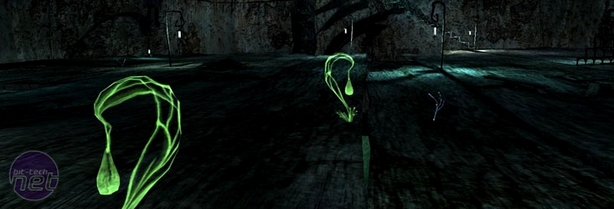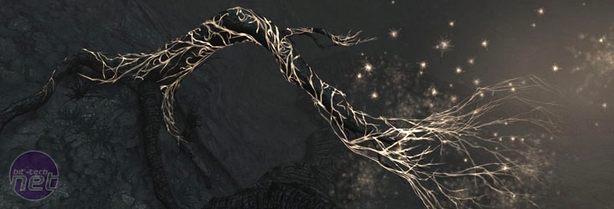
Into The Void
Functionally, The Void is best described as a first-person adventure resource management game. Your role is to travel around the world collecting Colour and interacting with the Brothers and Sisters who populate this weird nether-realm you find yourself in. Befriending Sisters will bestow you with new powers, which you activate by drawing them on the screen with certain Colours – something you want to do as sparingly as possible because Colour is a limited resource.The Void is a grey world, utterly devoid of colour except for in a few plants. All creatures in the world need to store Colour to live, keeping within their bodies and gradually turning it into Nerva – which is basically your ammo. Colour therefore functions as both you health and your ammo and you’re constantly on the look out for it.
All of this is then further complicated by the fact that The Void is divided up into gardens, with each sister looking after a specific set. When you are in a garden and are playing in first person then time doesn’t progress at all – which means you aren’t transmuting Colour and new Colour isn’t being created in the world. Time only flows when you’re looking at the over-world map, but when you’re there then you’re Colour is constantly leaking away – and if this is all getting a bit complex then you’re just going to have to bear with it because it doesn’t get any better.
The core challenge of the game is actually a simple case of conserving supplies, with you having to always ensure you have enough Colour in your Hearts to let you make a trip to the next garden, where you can seed Colour that will grow in the next cycle. In order for the next cycle to come though you’ll need to travel on the map, exploring and fulfilling the requirements of the Sisters within the allotted game length.
Honestly, it’s a complex and taxing gameplay mechanic that suffers from the fact that all of this is explained so slowly and then over-complicated by the introduction of somewhat hand-fisted combat that’s won by painting enemies and drawing glyphs for power-ups.
At the same time though, the idea of managing such a sparse resource is something that’ll obviously appeal to the strategy gamers out there even though the mechanic is presented somewhat oddly.
The strategic nature of the gameplay is only half the story though and a lot of The Void’s true appeal lies simply in the visual splendour of the locations you get a chance to explore. The relentlessly bleak aesthetic that the world is covered in slowly livens up as you progress and start painting tattoos of Colour across the plant-life, while the architecture and design geometry is like something from an acid trip sponsored by Salvador Dali. The Void is full of staircases that twist back on themselves, of trees standing in limitless oceans and of towers with no tops or bottoms. It’s really quite breathtaking.
Unfortunately though, The Void clearly isn’t for everyone. It’s obtuse to the point of obstruction and slower than a sleepwalker swimming through a sea of honey. It’s also inordinately difficult and there are several points in the game where it’s possible to shoot yourself in the foot without realising it until much later – though that’s offset by plentiful endings and a fixed game length.

It’s a wonderful gamble that Ice Pick has made with The Void – offering up a wealth of innovation to an audience of gamers who constantly claim that they are tired of trench warfare, M16s and space marines. Ice Pick has laid down what PC gamers have been begging for; something new and unusual and so spectacularly beautiful that we wish the gameplay had been culled out completely and that we could just wander around the world freely.
Innovation is a dangerous thing though and Ice Pick has shown why it’s usually achieved in baby-steps, because the majority of PC gamers are likely going to find The Void too new, too oddball and too unwieldy to get to grips with. Still, The Void is undeniably a stand-out and very important game, though one which is also impossible to recommend to anybody in particular. That’s OK though – those of you who’d be interested in a game like this already know who you are.
Score Guide

MSI MPG Velox 100R Chassis Review
October 14 2021 | 15:04











Want to comment? Please log in.